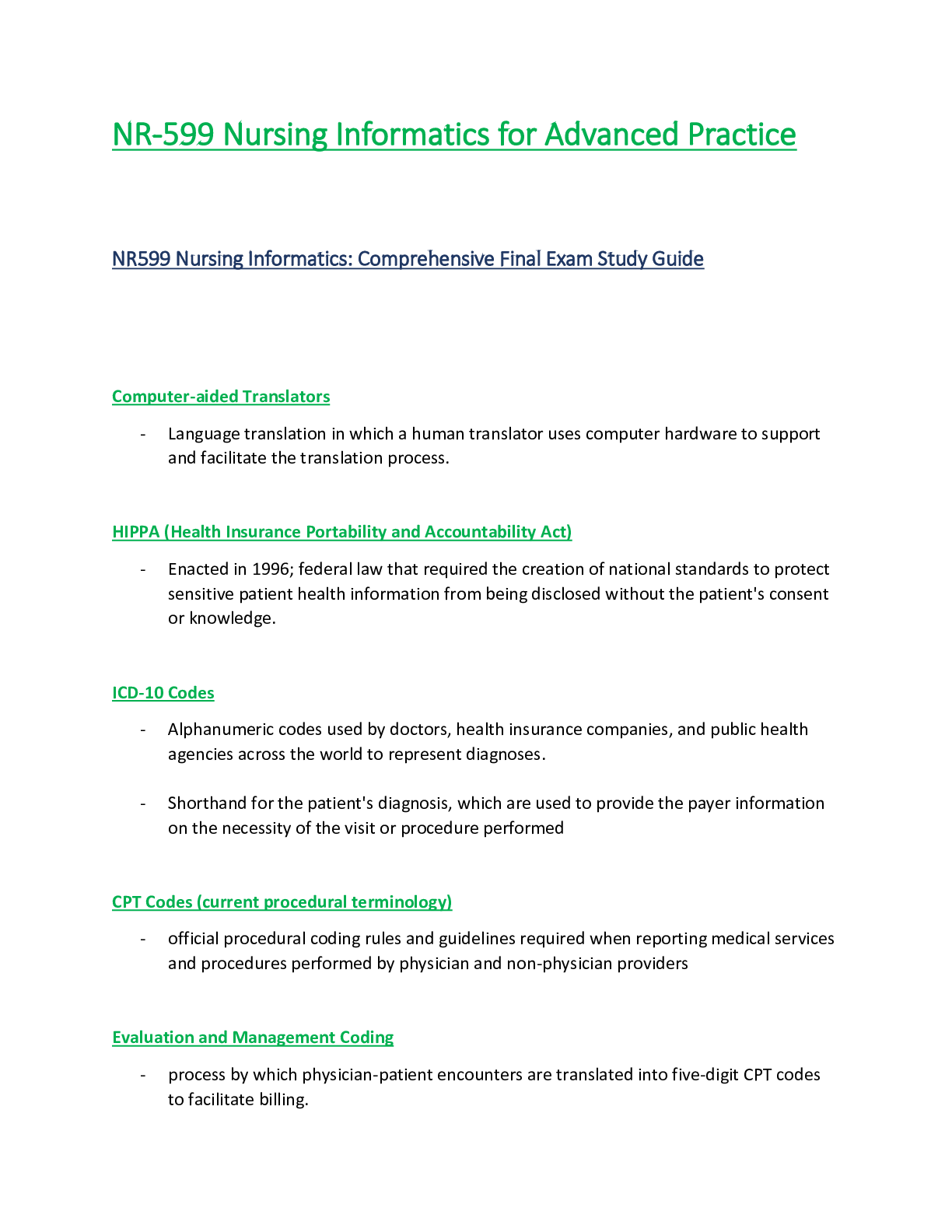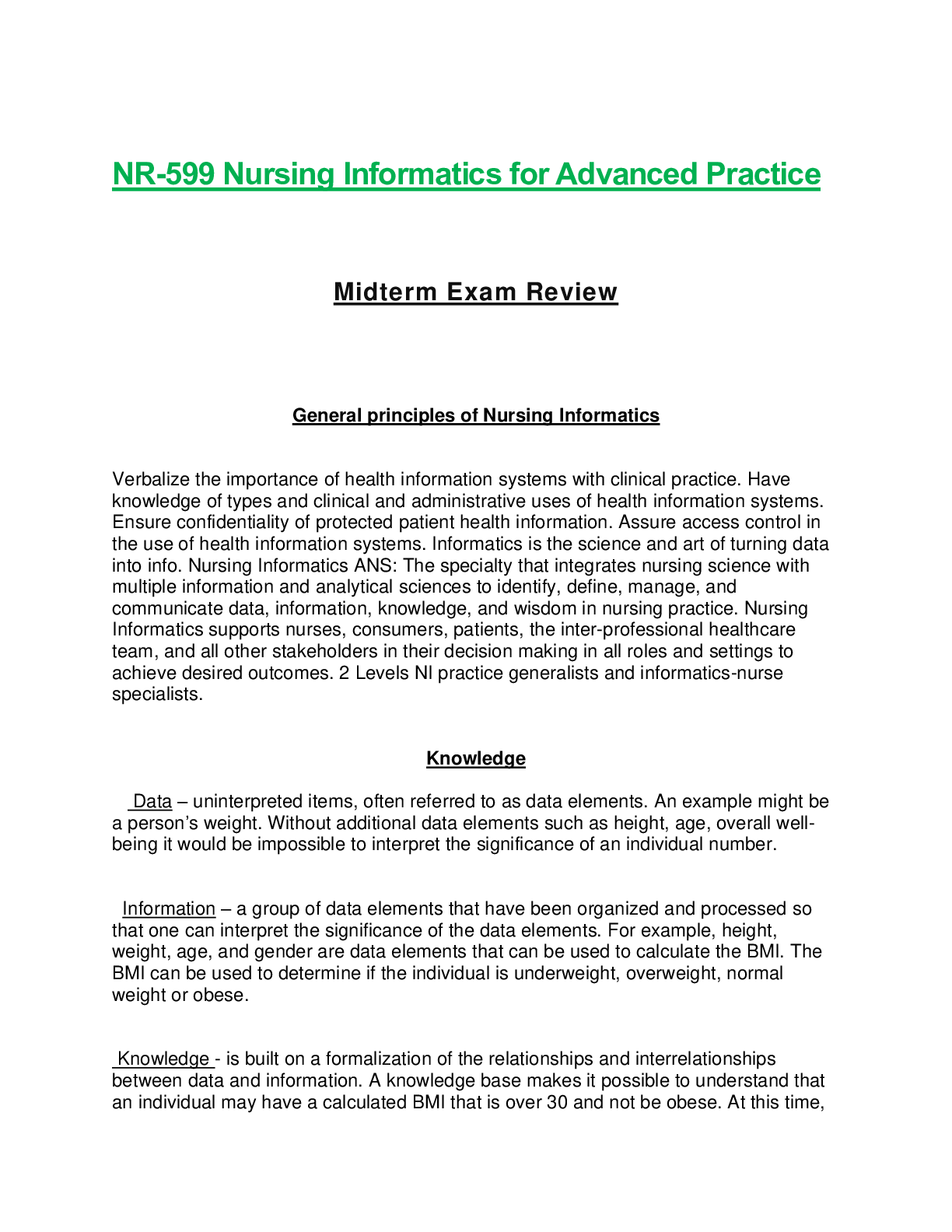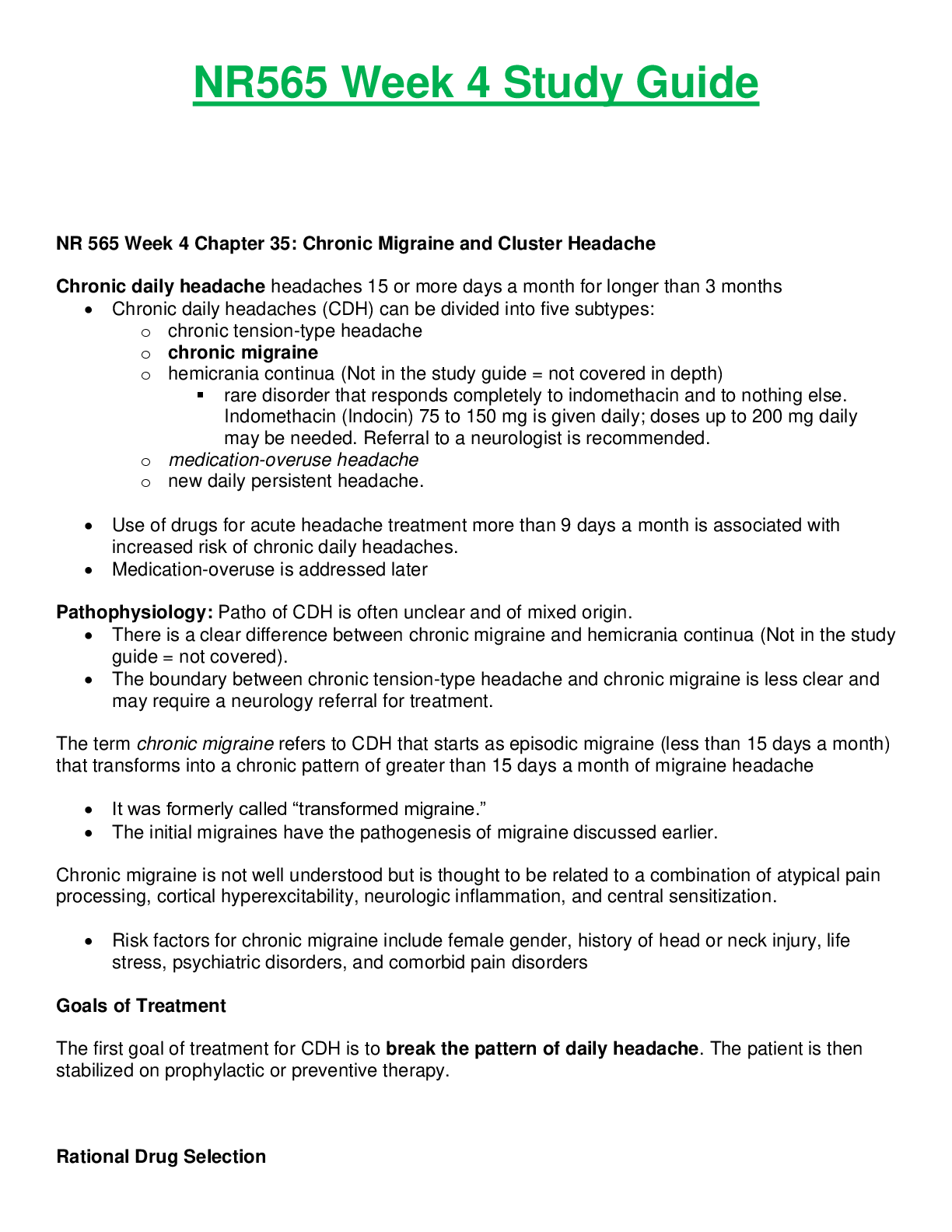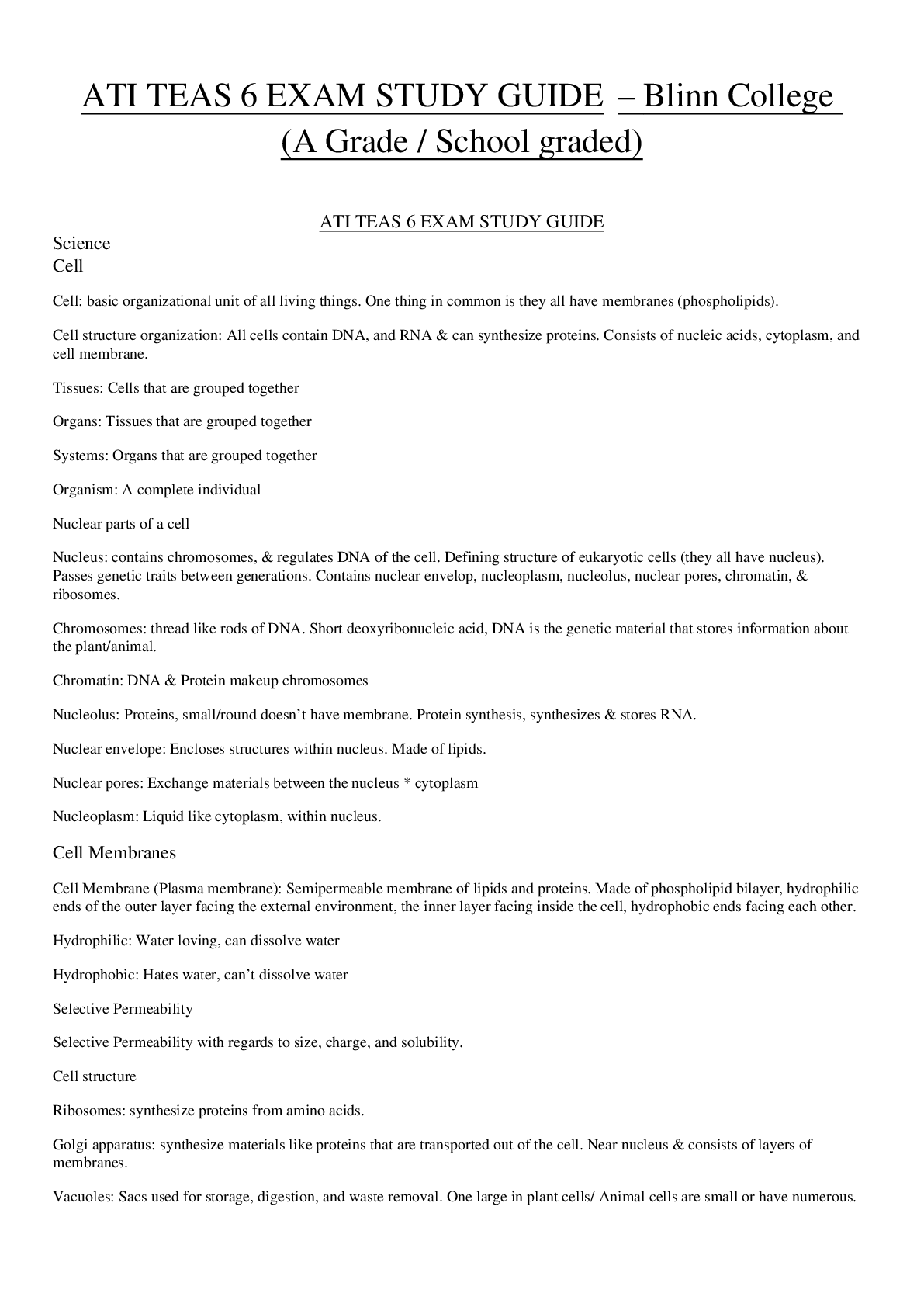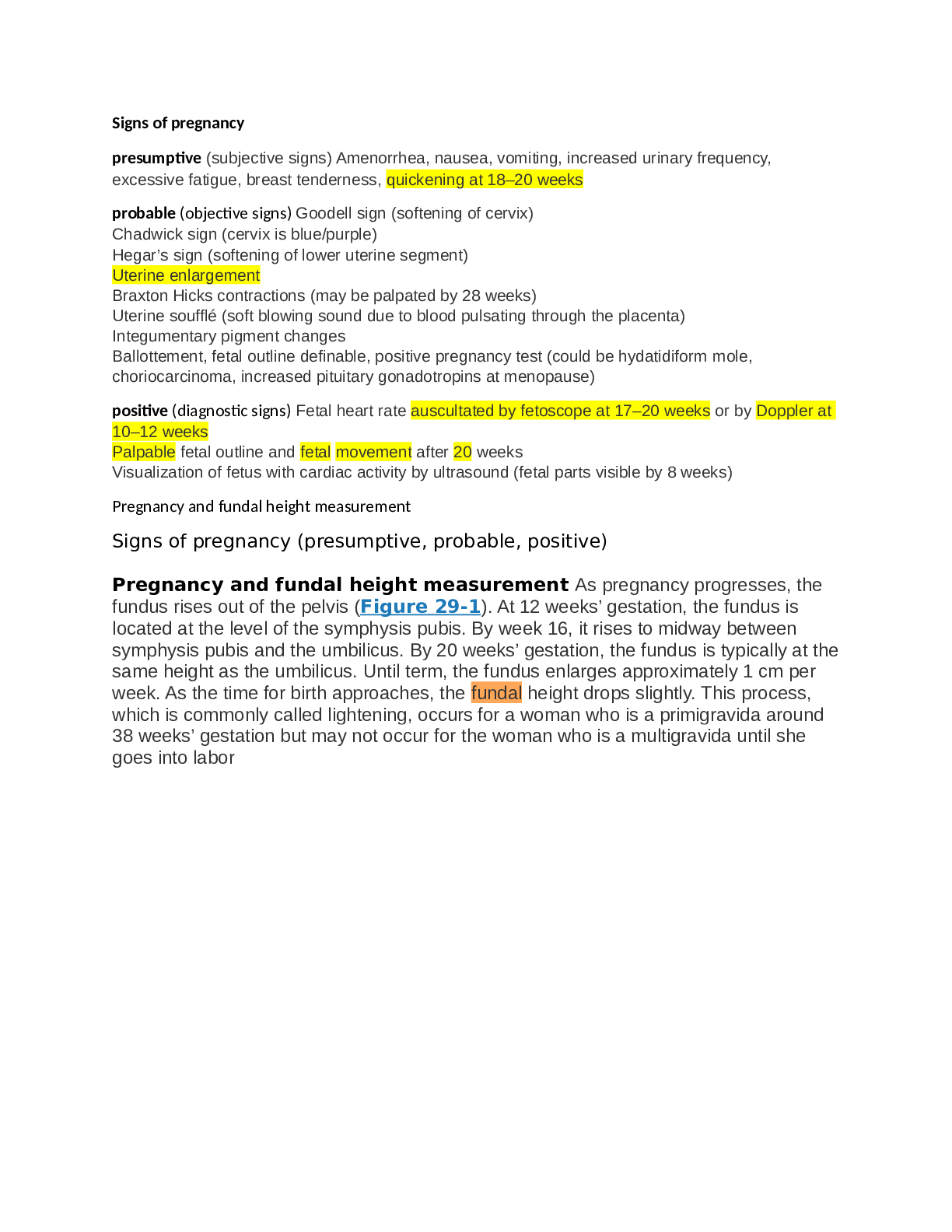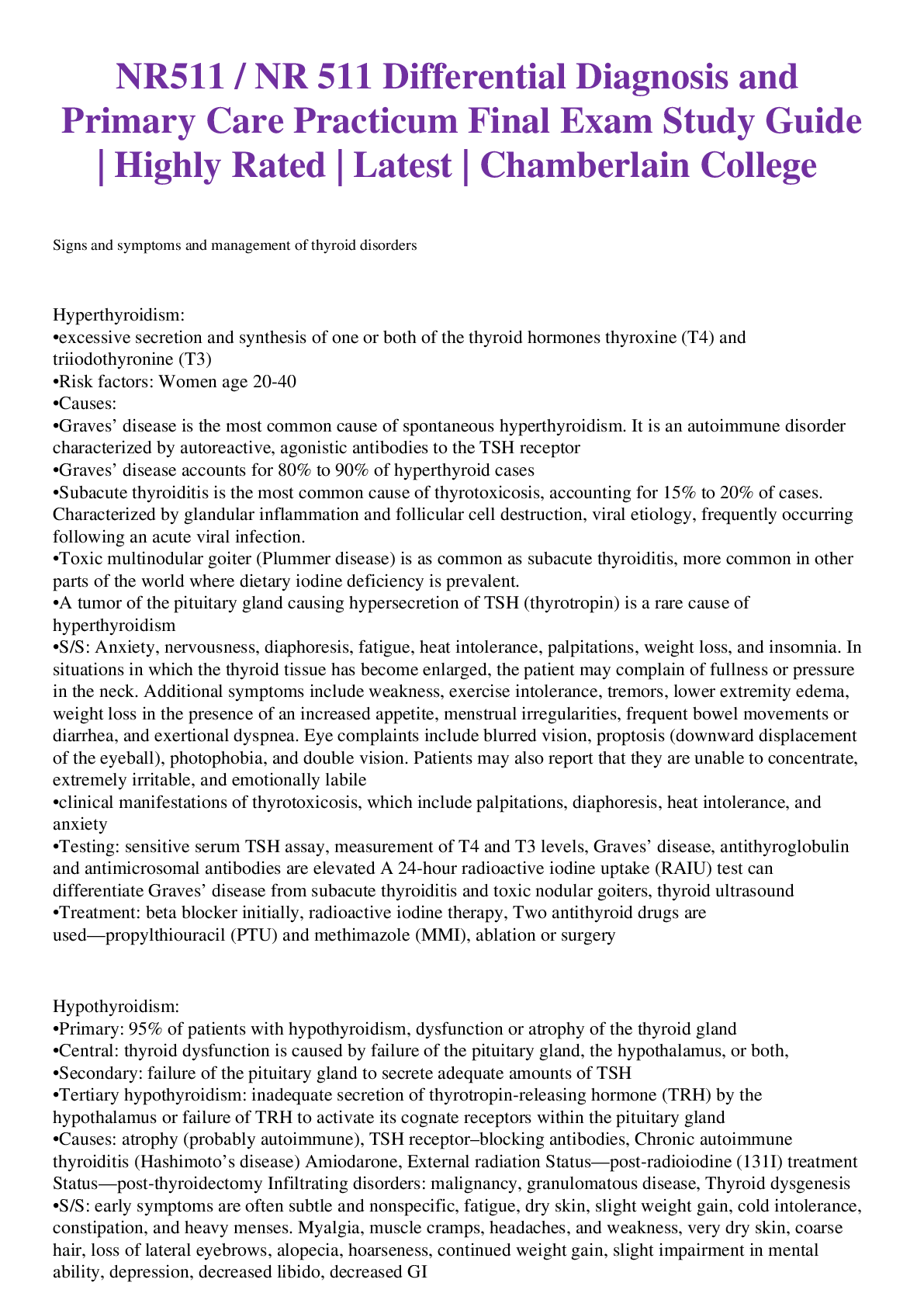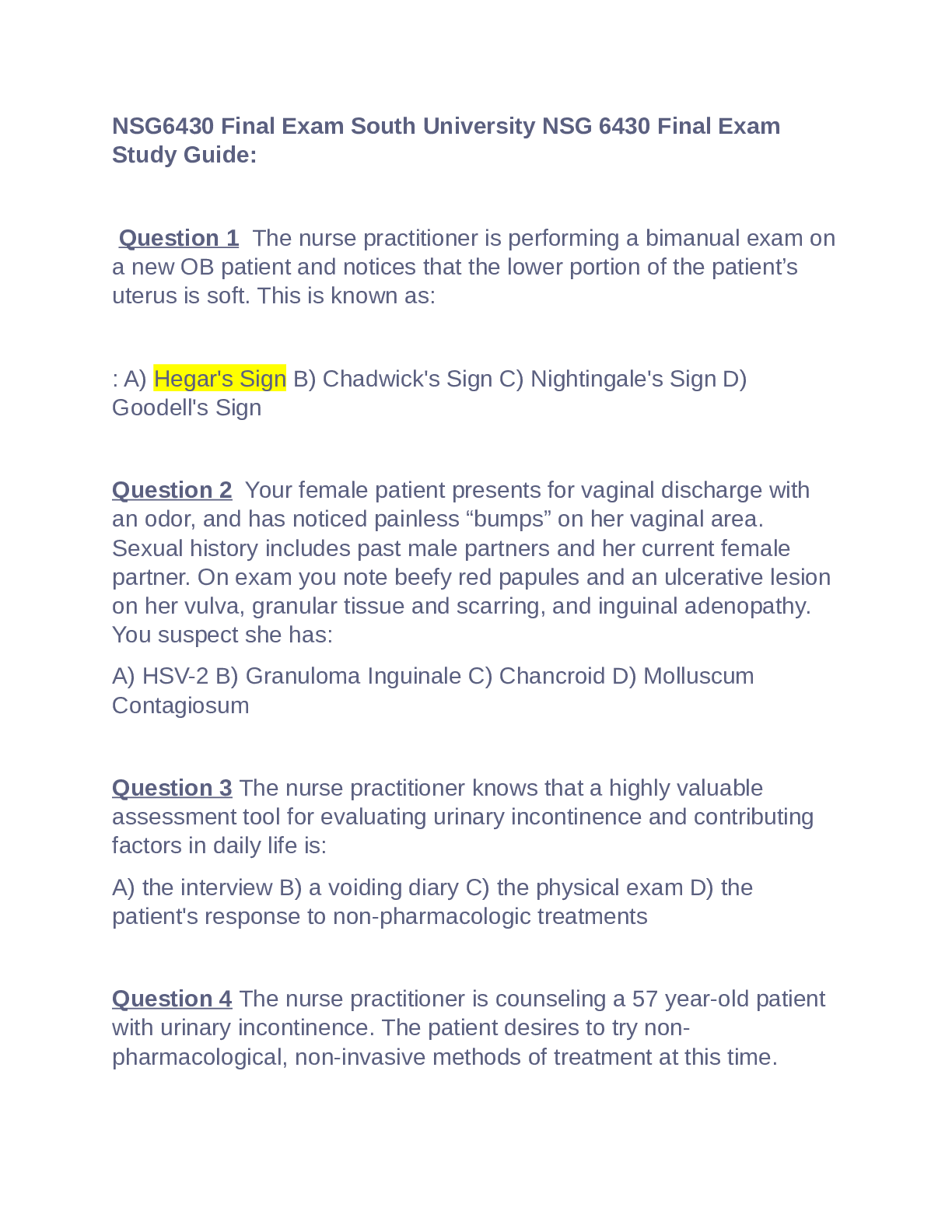*NURSING > STUDY GUIDE > NR601 / NR 601 Primary Care of the Maturing and Aged Family Practicum Final Exam Study Guide | Week (All)
NR601 / NR 601 Primary Care of the Maturing and Aged Family Practicum Final Exam Study Guide | Week 5-7 | Highly Rated | LATEST | Chamberlain College of Nursing
Document Content and Description Below
NR601 / NR 601 Primary Care of the Maturing and Aged Family Practicum Final Exam Study Guide | Week 5-7 | Highly Rated | LATEST | Chamberlain College of Nursing Week 5 : Glucose Metabolism Disorders ... Types of diabetes (prediabetes, type 1, and type 2) Prediabetes: fasting glucose consistently elevated above the normal range but less than 100-125. Impaired glucose tolerance (IGT) state of hyperglycemia where 2 hr post glucose load glycemic level is 140-199 Type 1: severe insulin deficiency resulting in reduction or absence of functioning beta cells in the pancreatic islets of Langerhans. This leads to hyperglycemia due to altered metabolism of lipids, carbs, and proteins. − Initial s/s of hyperglycemia. − Subjective findings- polyuria, polydipsia, nocturnal enuresis and polyphagia with paradoxical weight loss, visual changes and fatigue. − Objective-dehydration (poor skin turgor and dry mucous), wt loss despite normal/increase appetite, reduction in muscle mass. DKA (fatigue, cramping, abnormal breathing, halitosis (rotten fruit + nail polish smell) o Long-stand DM: ▪ retinopathy (1. dilation of retinal venules and retinal capillary microaneurysms. 2. Increased vascular permeability. 3. Retinal ischemia due to vascular occlusion. 4. Angiogenesis – proliferation of new retinal surface blood vessels. 5. Retinal hemorrhage with fibrovascular proliferation and contraction, which may lead to retinal detachment • All these findings should be referred to an ophthalmologist. ▪ Skin complications: chronic pyogenic infections or necrobiosis lipoidica diabeticorum (plaques with shiny yellow surface on anterior surfaces of legs or dorsal aspects of ankles) ▪ Paresthesia to distal extremities (foot ulcers, burns on hands from cooking) ▪ Gaze deviations in affected eyes from cranial nerve palsies Type 2: Type 2 DM is characterized by the abnormal secretion of insulin, resistance to the action of insulin in the target tissues, and/or an inadequate response at the level of the insulin receptor. A patient may, however, present with pruritus, fatigue, neuropathic complaints such as numbness and tingling, or blurred vision. Risk factors: most common ethnicity Race/Ethnicity • African American • Latino • Native American • Asian American • Pacific Islander Diabetes Diagnostic Criteria − Hbg A1C of 6.5% or higher − Symptoms of diabetes (polyuria, polydipsia, weight loss) + a random plasma glucose of 200 or higher − Fasting plasma glucose of 126 or higher (fasting for 8 hours) − Two-hour plasma glucose level of 200 or higher during an oral glucose tolerance test (with a 75 g glucose load) *** In the absence of unequivocal hyperglycemia results should be confirmed by repeat testing on a new blood sample without delay, preferably using the same type of test *** • *All above-but confirmation of type 2 diabetes mellitus requires: two fasting blood glucoses ≥126 mg/dL or two random blood glucoses ≥200 mg/dL. • You do not screen for type 1 diabetes but you do screen for type 2 if an individual is overweight or obese, regardless of age, and for all adults aged 45 years and older. Tests should be repeated at a minimum of 3 year intervals Initial treatment recommendations- first line treatment for each type Type 1 DM: First line: Insulin − Goal is to normalize the elevated blood glucose level − Insulin regimen to achieve plasma glucose levels: o Before meals: 80-130, o Peak postprandial (1-2 hours after the beginning of a meal): < 180 o Hgb A1C < 7% − The 2017 ADA standards: the majority of T1DM should be treated with multiple daily injections of prandial insulin and daily basal insulin or with a continuous SQ insulin infusion pump Drugs for Type 1 DM o Single-Dose Therapy ▪ Single Injection • Intermediate or long-acting insulin with or without regular insulin in the morning • Or • Intermediate or long acting insulin at bedtime • Recommended at a minimum SMBG in the morning and at bedtime o Conventional Split-Dose Therapy ▪ Two Injections • Mixture of NPH and regular insulin in the morning and evening • Recommended at a minimum SMBG before each dosing and at bedtime o Intensive Insulin Therapy ▪ Three Injections • NPH + regular insulin in the morning; regular insulin at dinner; NPH insulin at bedtime • Monitor for increased risk of hypoglycemic episodes ▪ Four injections • Regular or lispro insulin before meals and long-acting insulin to maintain basal insulin levels • Monitor for increased risk of hypoglycemic episodes TYPES OF INSULIN Class Type Onset Peak Duration Insulin Glulisine Apidra < 5 min 1-2 hours 2-3 hours Insulin Aspart Novolog < 10 min 1-3 hours 3-5 hours Insulin Lispro Humalog < 15 min 1-2 hours 3-4 hours Regular Insulin Humulin R 30-60 min 2-6 hours 6-8 hours Iletin II Regular 30-60 min 2-6 hours 6-8 hours Novolin R 30-60 min 2-6 hours 6-8 hours Purified Pork Regular 30-60 min 2-6 hours 6-8 hours Velosulin 30-60 min 2-4 hours 6-8 hours Insulin (NPH) Humulin N 1-1.5 hours 4-12 hours 18-24 hours Iletin II NPH 1-1.5 hours 4-12 hours 18-24 hours Novolin N 1-1.5 hours 4-12 hours 18-24 hours Purified Pork NPH 1-1.5 hours 4-12 hours 18-24 hours NPH/Regular Humulin 70/30 30-60 min 2-12 hours 24 hours Humulin 50/50 30-60 min 3-5 hours 24 hours Novolin 70/30 30-60 min 2-12 hours 24 hours Insulin Glargine Lantus Gradual onset Peakless Up to 24 hours Insulin Detemir Levemir Gradua [Show More]
Last updated: 1 month ago
Preview 1 out of 46 pages
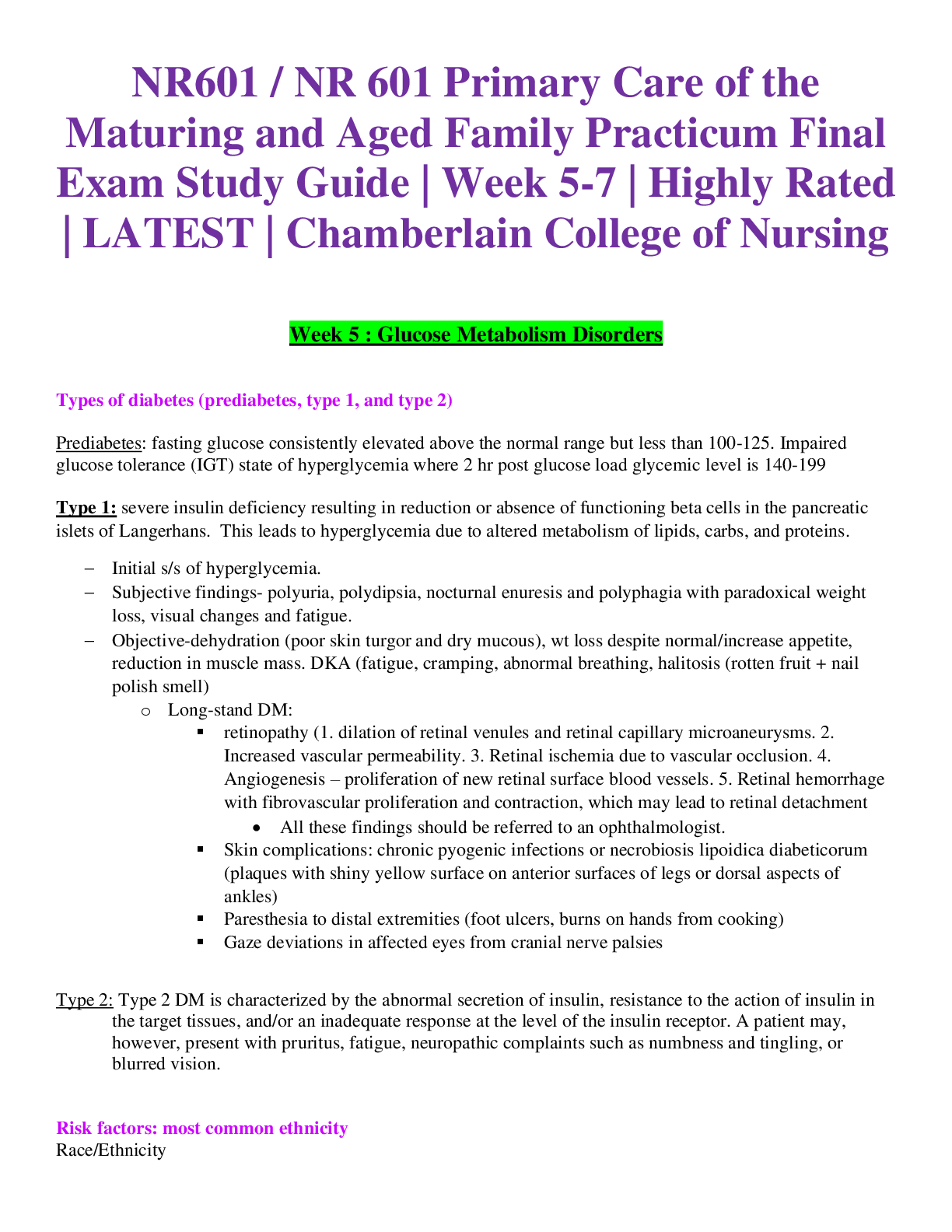
Reviews( 0 )
Document information
Connected school, study & course
About the document
Uploaded On
Feb 07, 2021
Number of pages
46
Written in
Additional information
This document has been written for:
Uploaded
Feb 07, 2021
Downloads
0
Views
53

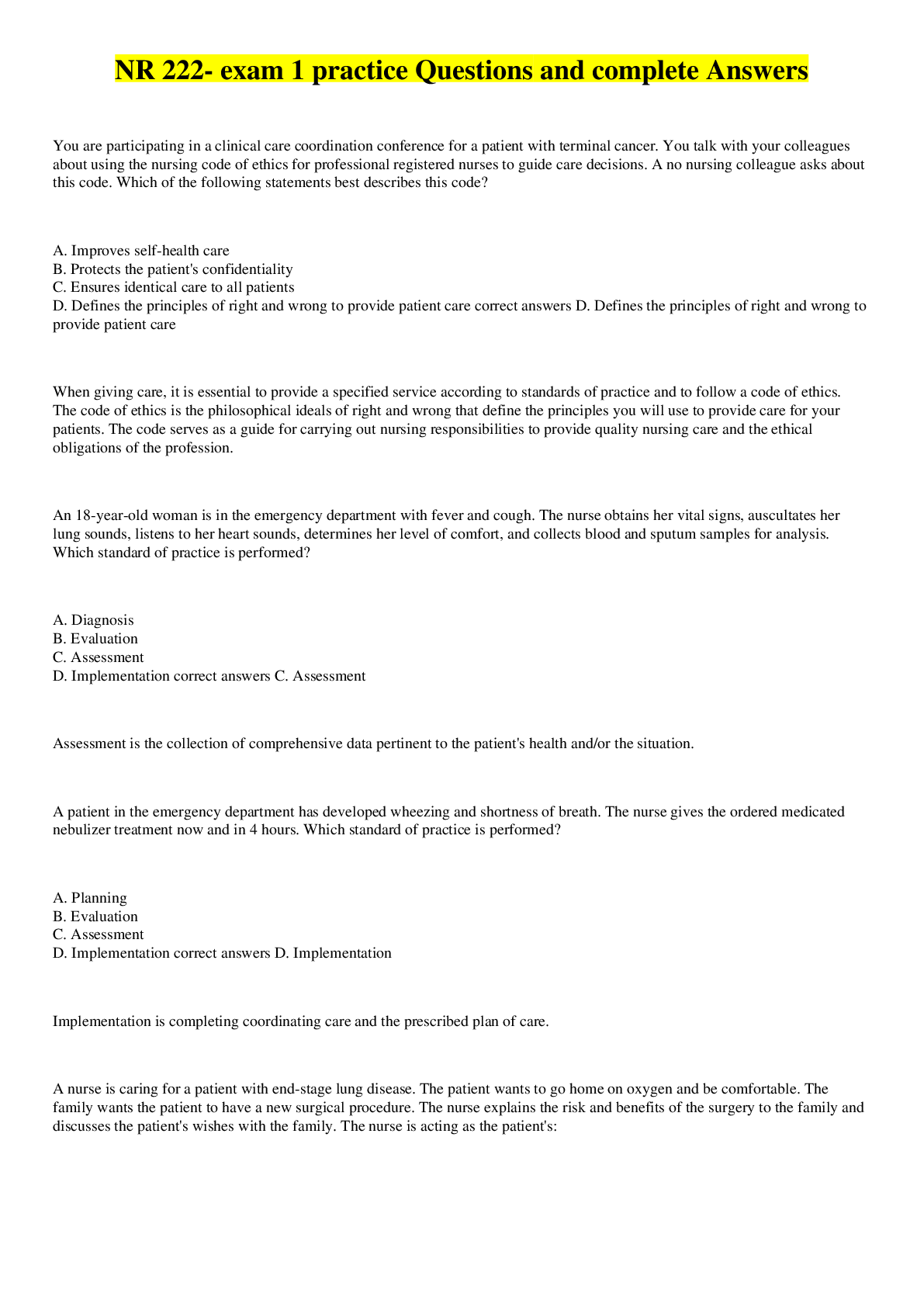
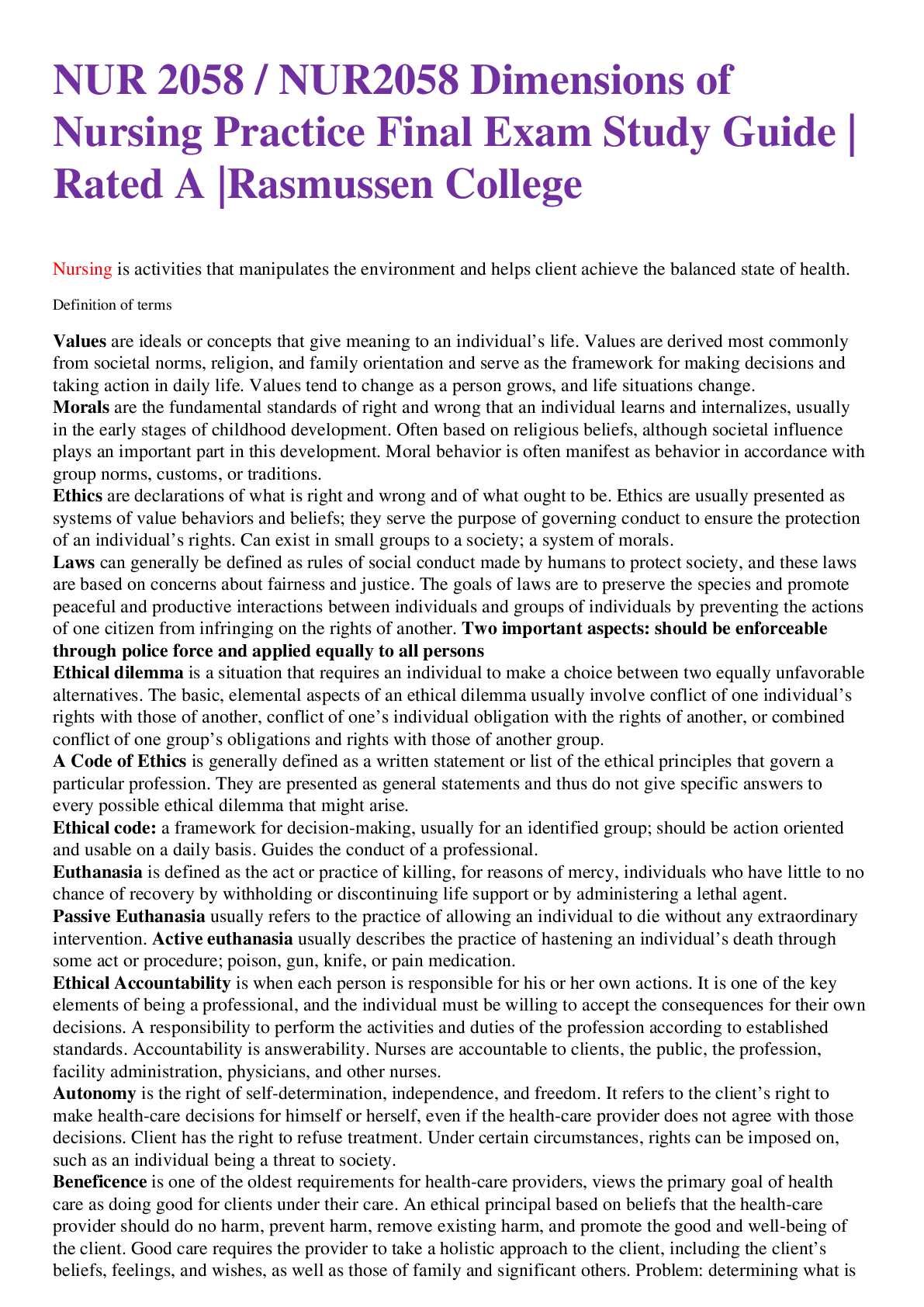

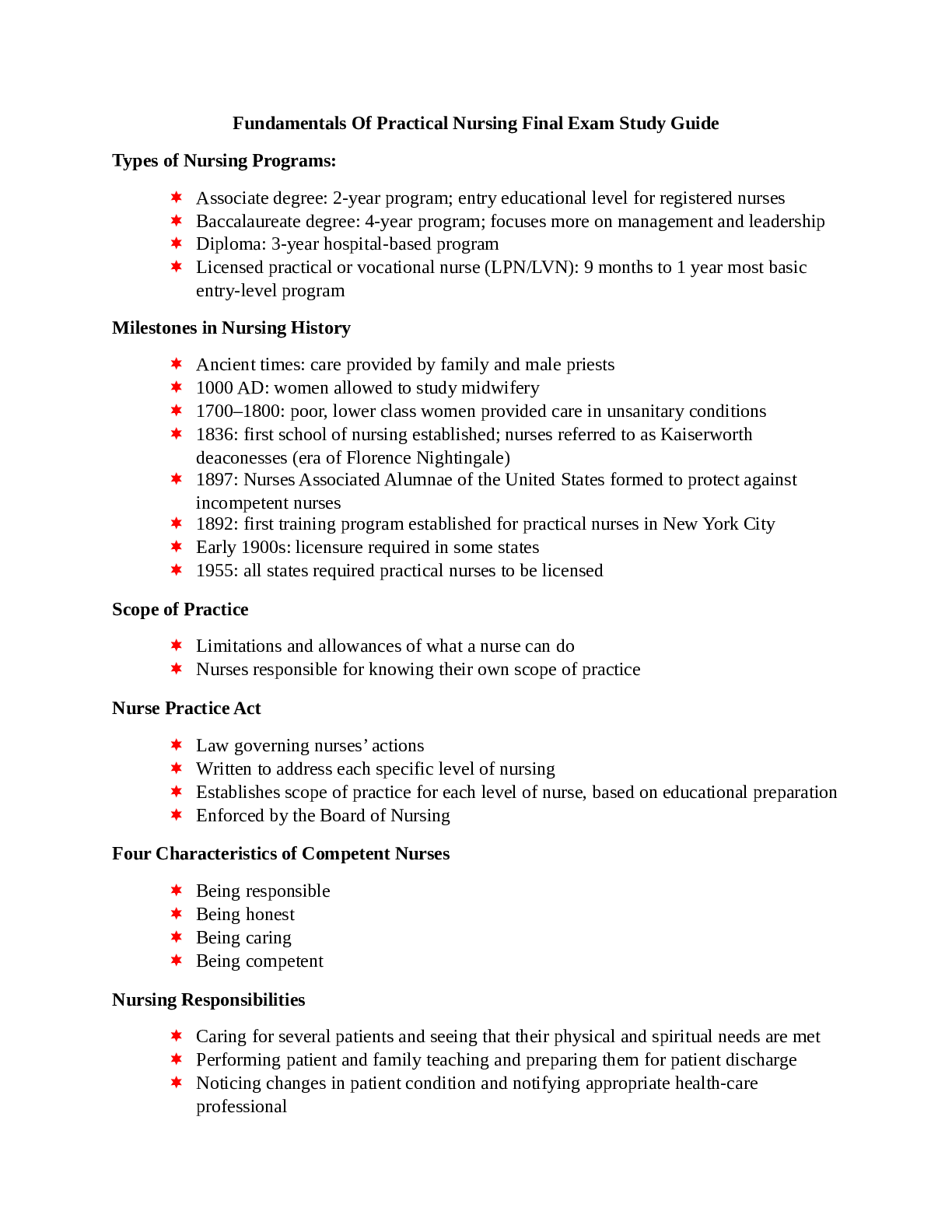

.png)
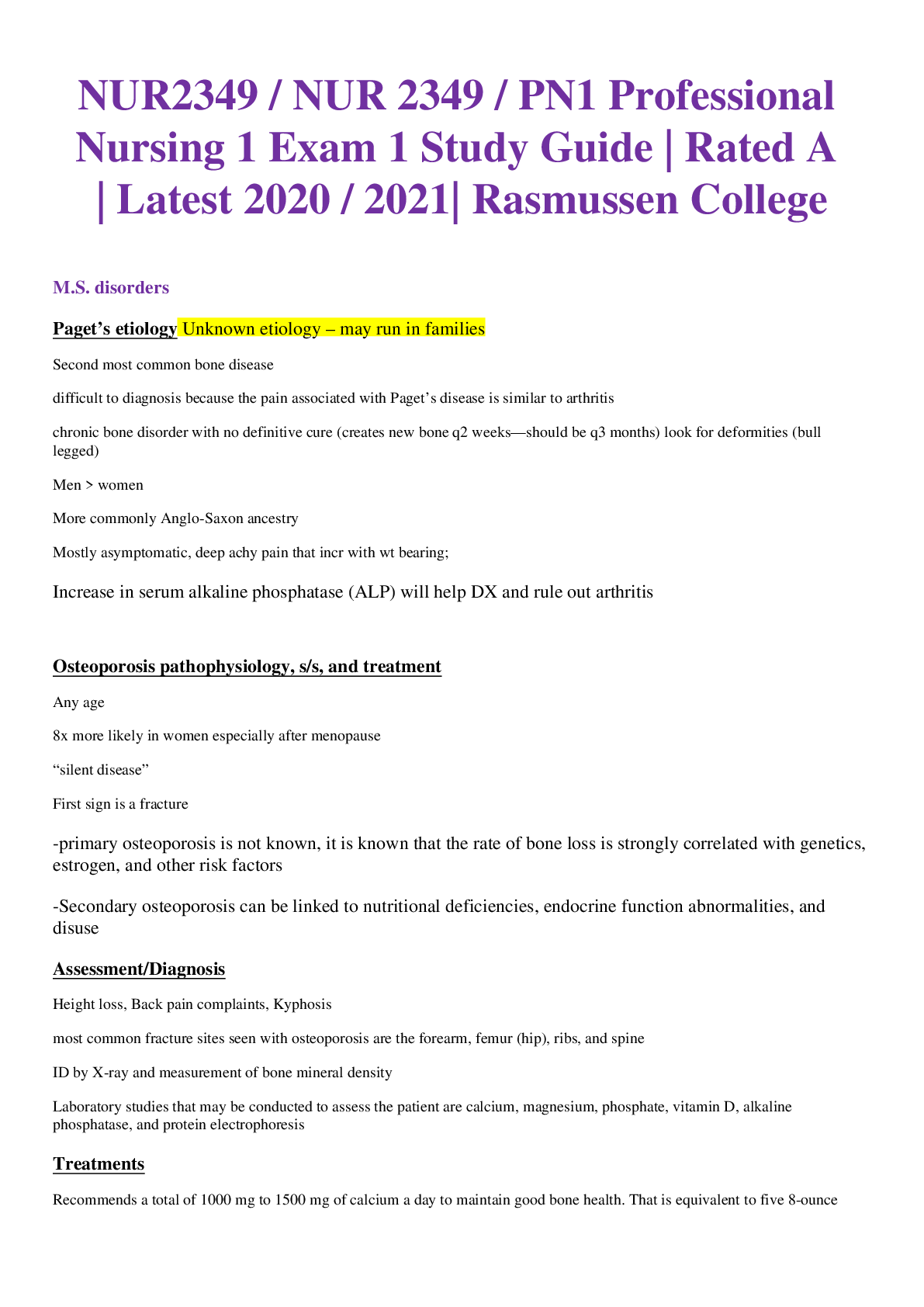
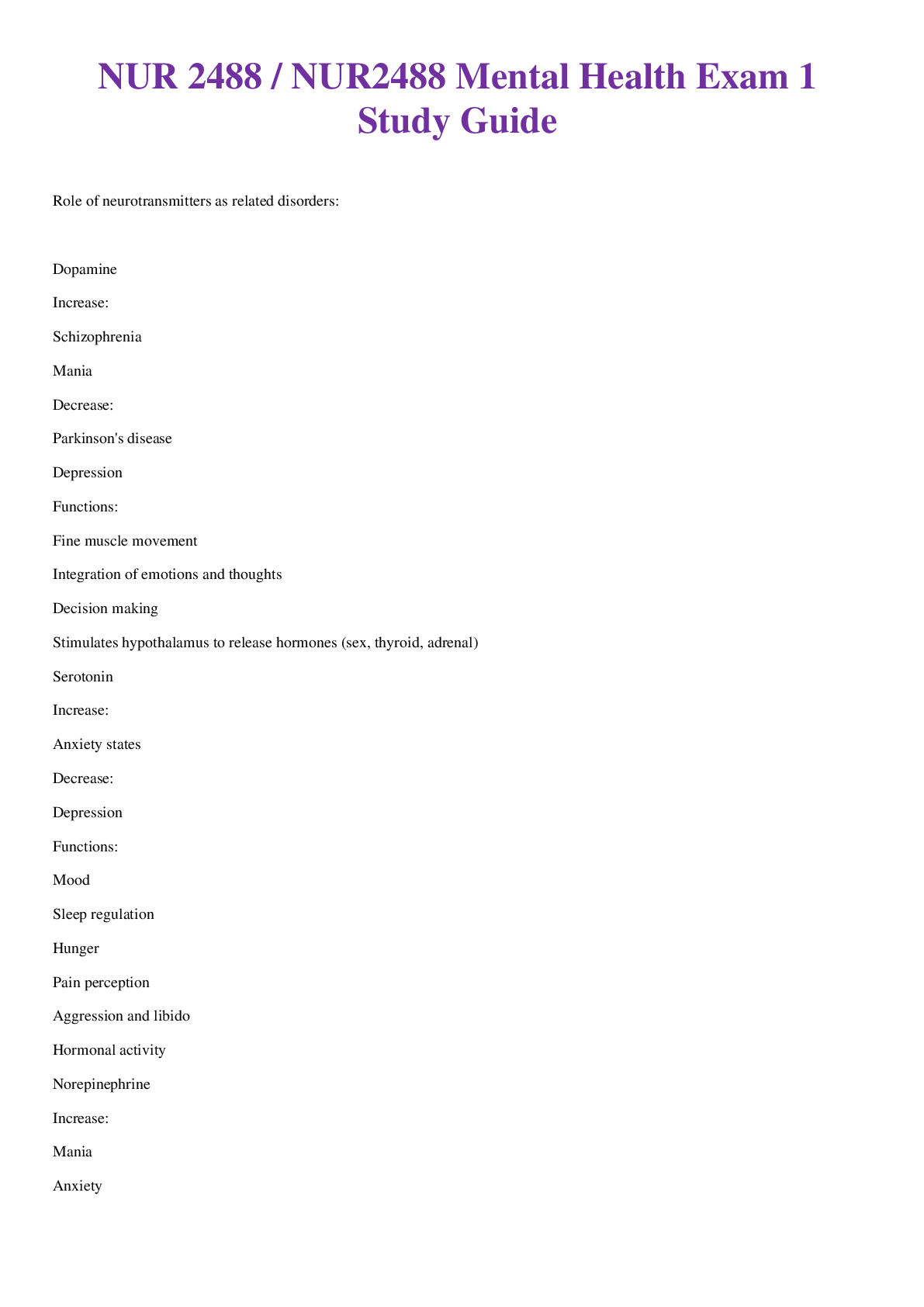
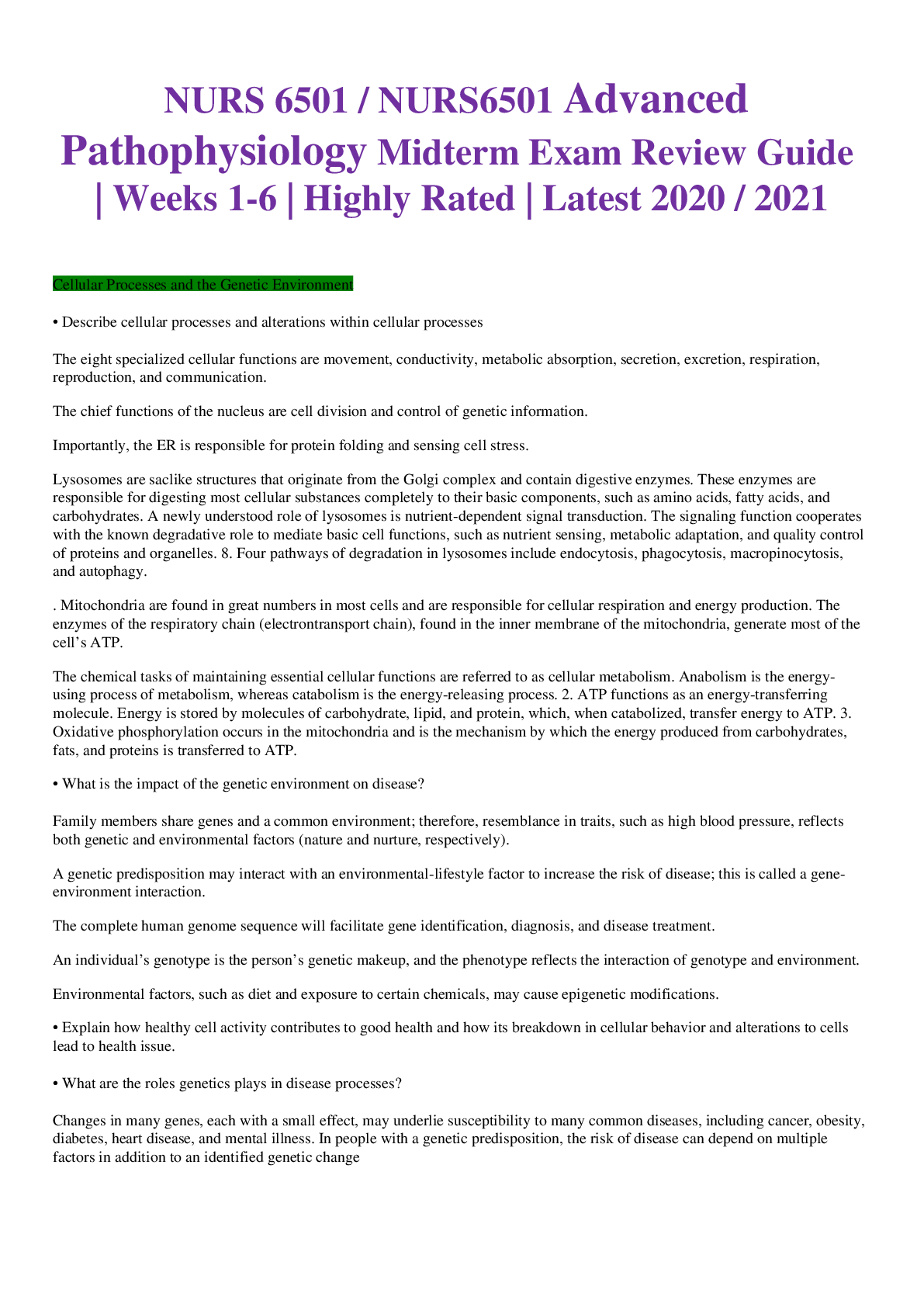
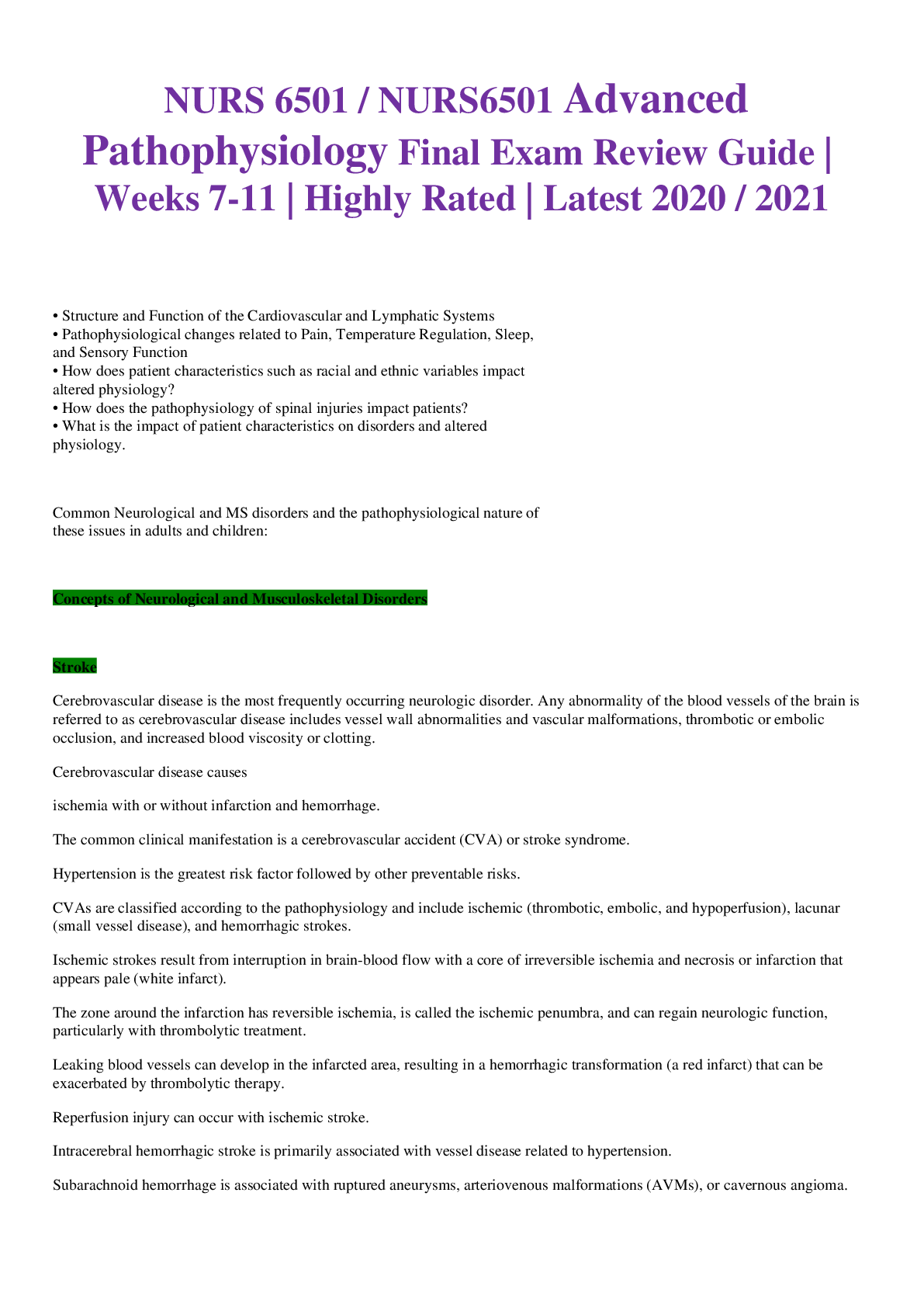
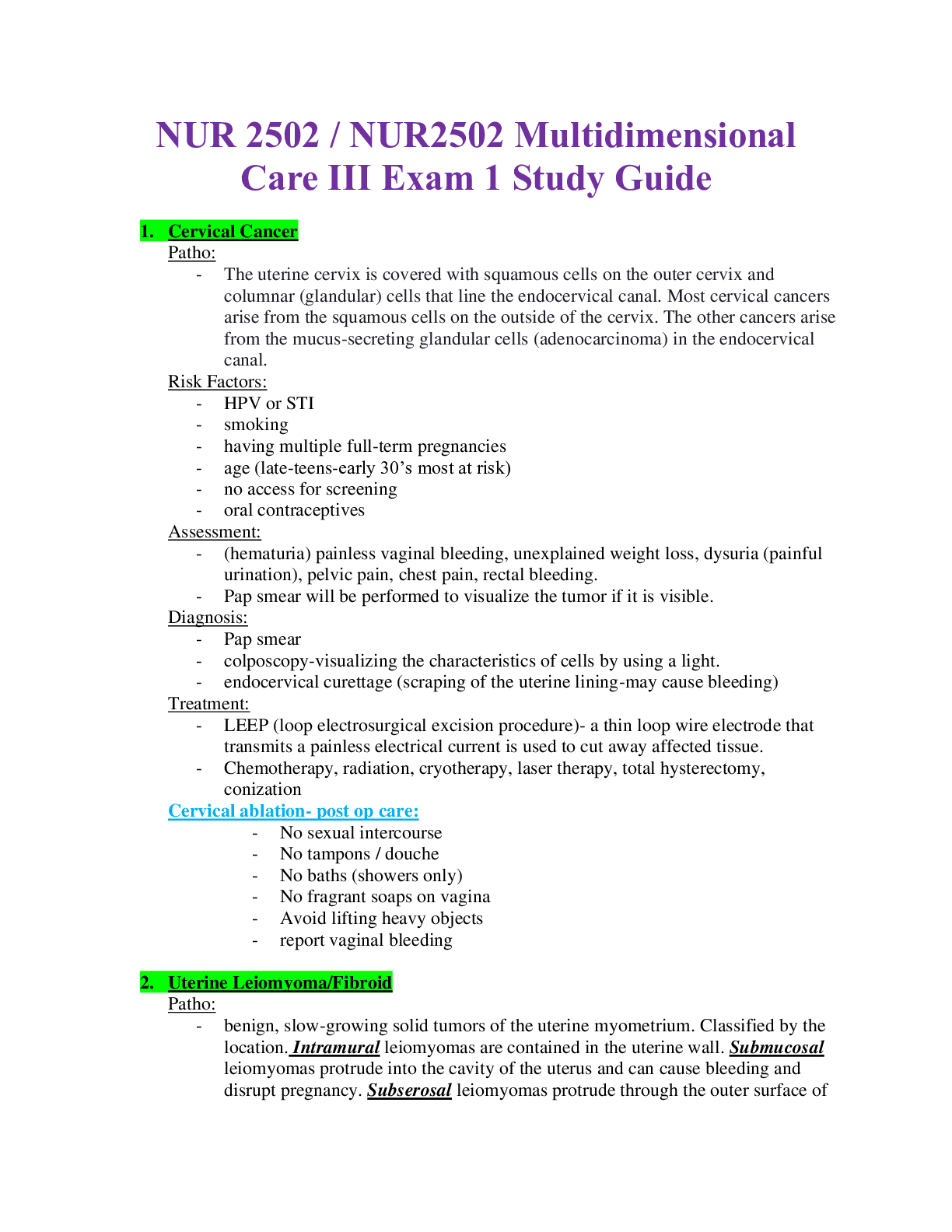
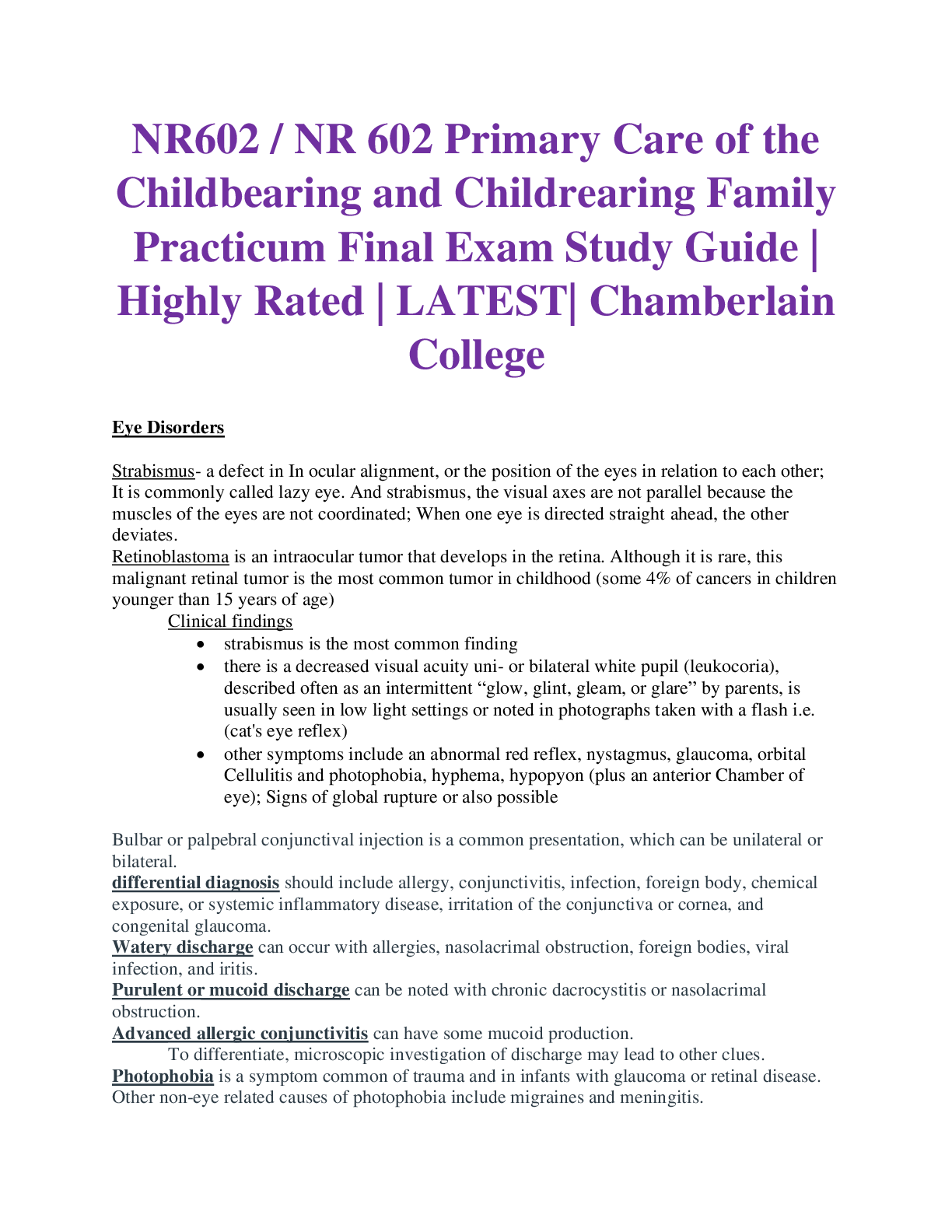
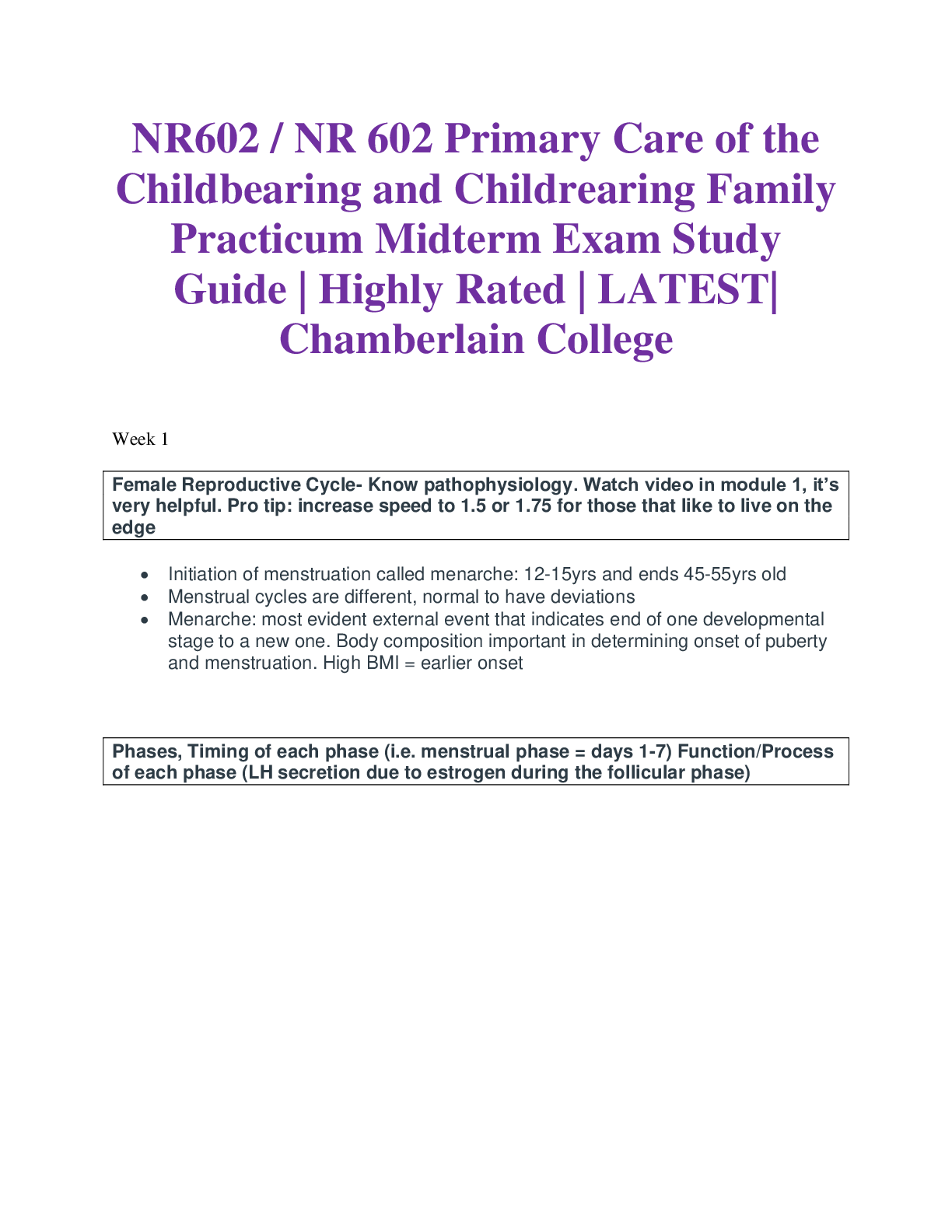
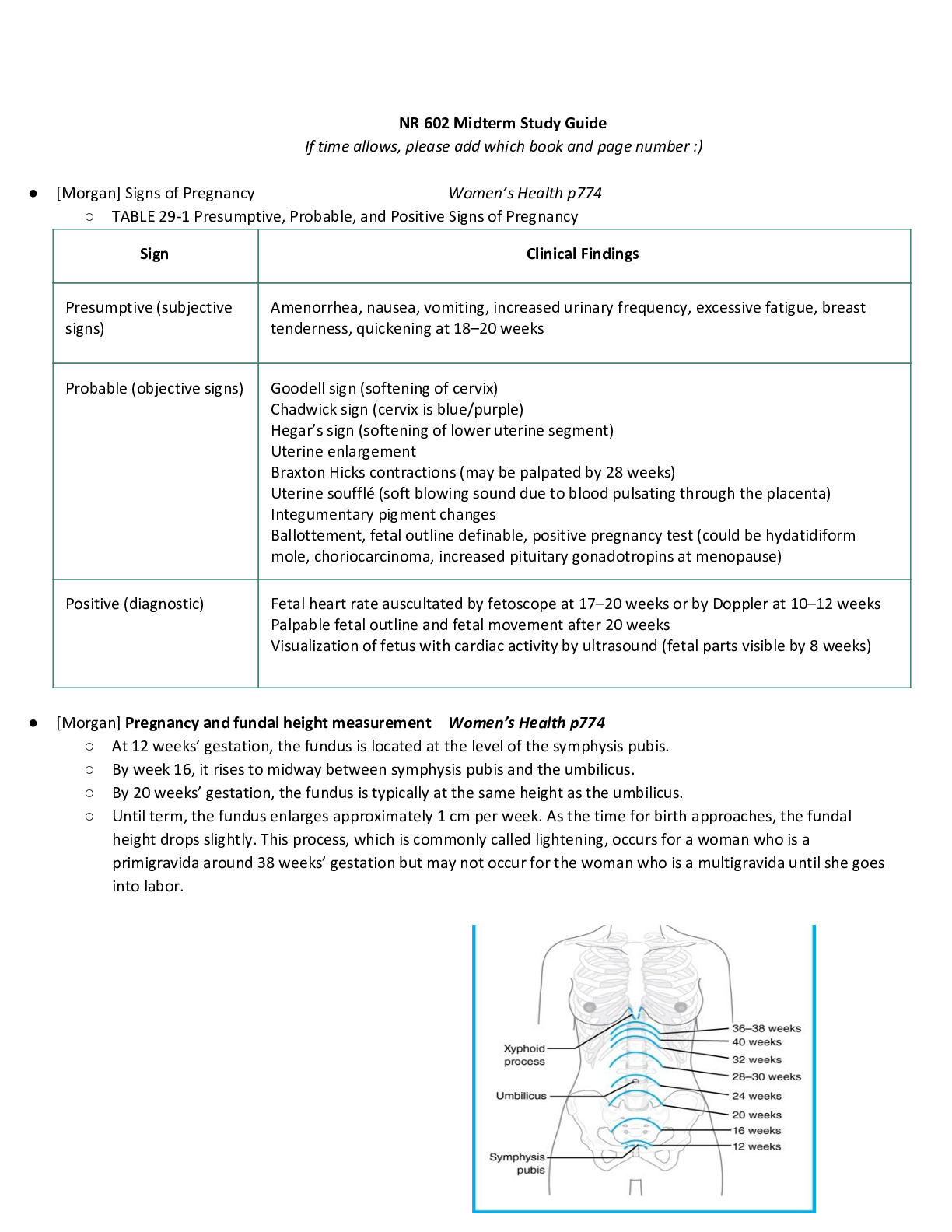
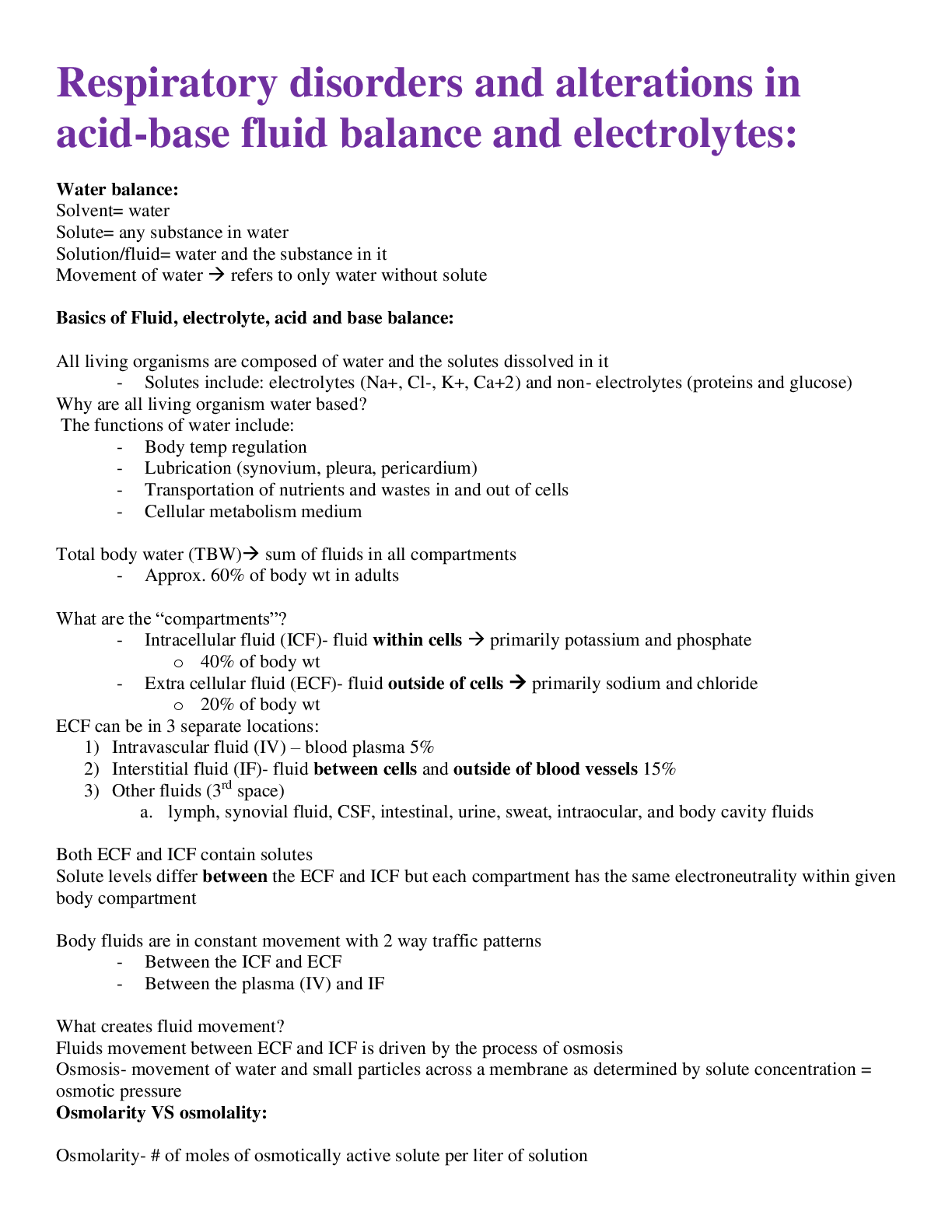

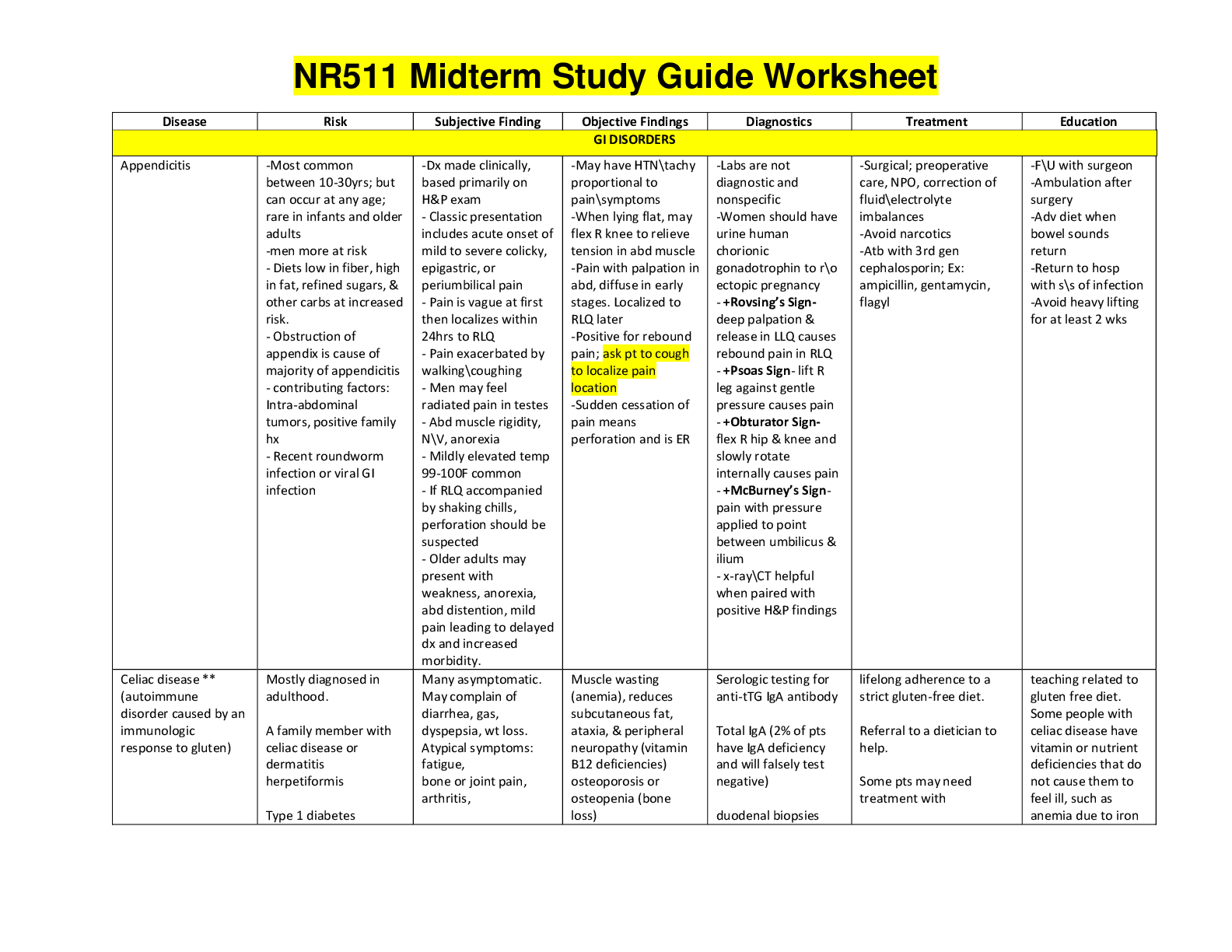
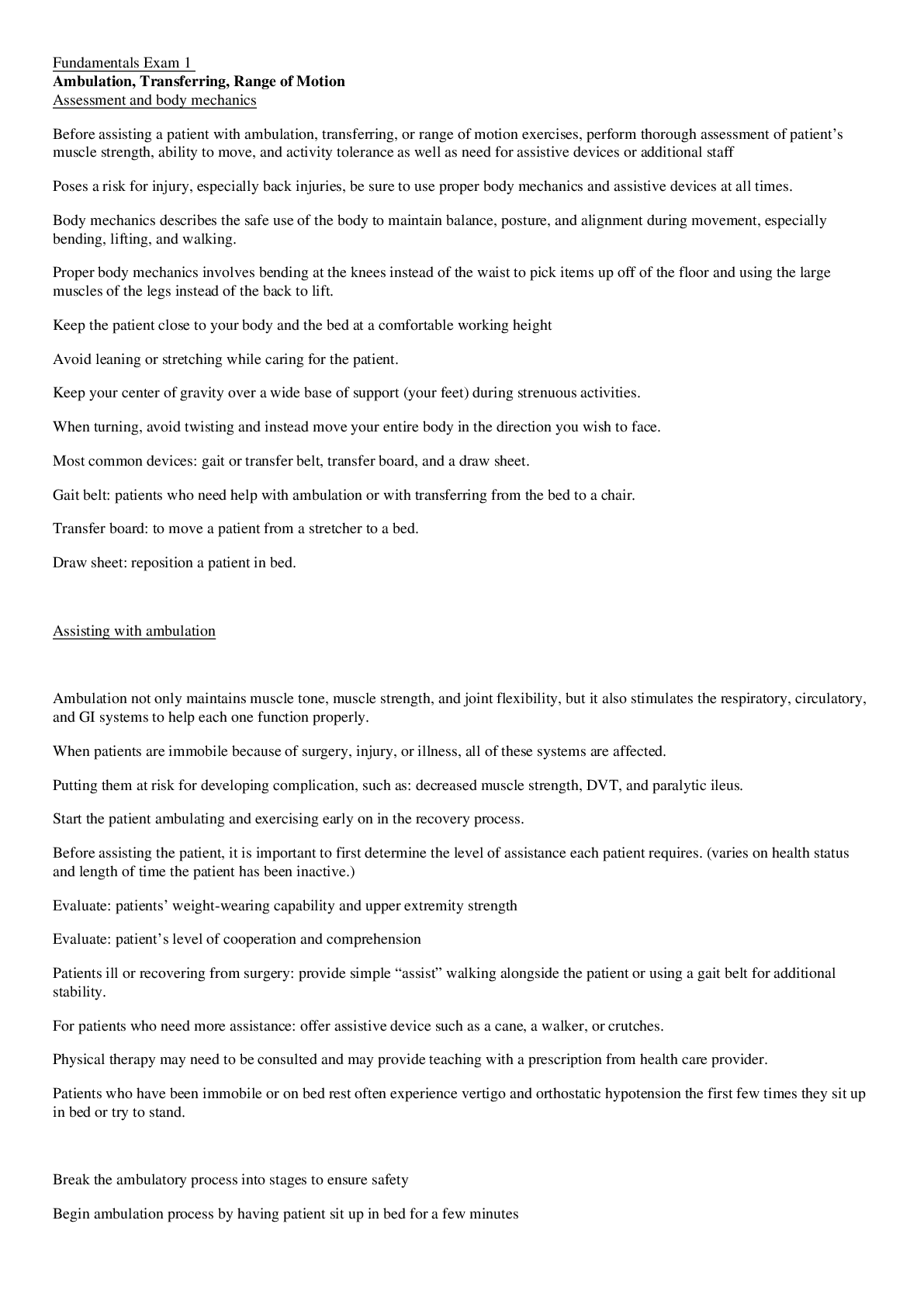
 Rasmussen College.png)
